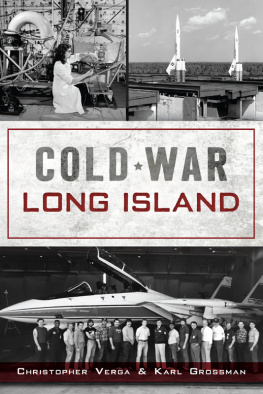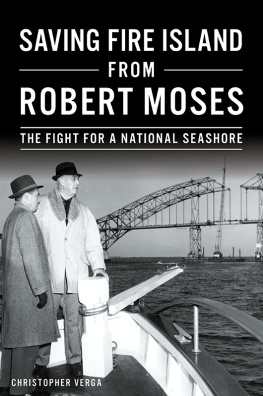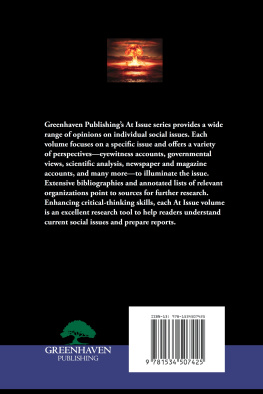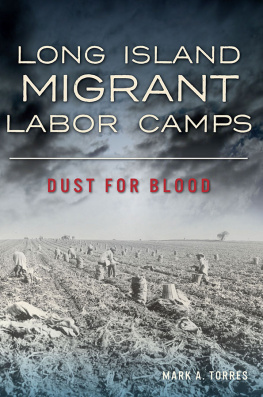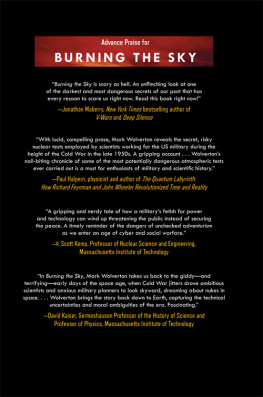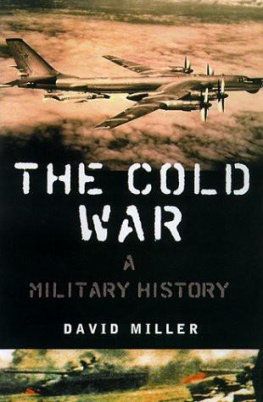


Published by The History Press
Charleston, SC
www.historypress.com
Copyright 2021 by Christopher Verga and Karl Grossman
All rights reserved
First published 2021
E-Book year 2021
ISBN 978.1.4396.7375.1
Library of Congress Control Number: 2021943542
Print Edition ISBN 978.1.4671.4857.3
Notice: The information in this book is true and complete to the best of our knowledge. It is offered without guarantee on the part of the authors or The History Press. The authors and The History Press disclaim all liability in connection with the use of this book.
All rights reserved. No part of this book may be reproduced or transmitted in any form whatsoever without prior written permission from the publisher except in the case of brief quotations embodied in articles and reviews.
CONTENTS
ACKNOWLEDGEMENTS
No one person can own or monopolize the history they write or interpret. The gatekeeper to our history lies in the collective efforts of a community to keep it alive. Whomever we recognize as heroes or villains are defined as such by the effect they had on a community they represented. The Cold War impacted and shaped Long Island physically, politically and economically. The period examined in this book took the young suburbia to its middle ages, when it was struggling to redefine itself.
This book would have not been possible without the help and support of the many people who tirelessly work to preserve this history through image collections and interviews. John Phelan and William Hughes of VFW Post 5350 of Westhampton were staples on creating the veterans experience prior to the war and after coming home from the war. To the Cradle of Aviation of Nassau County, thank you for the images of the plane crashes and Lunar Module. Thanks to Ralph Weyant for sharing the cover image of the F-14 and for sharing your experiences working with Grumman. We would like to express our gratitude for the images of the student unrest at Hofstra University, Charles Drydens work in Mitchel Field and access to other related files by Dr. Geri Solomon and Hofstra University Special Collections. These images and documents were essential in our retelling of an almost forgotten history. We would like to extend special recognition to all the local historians we consulted with at the Bay Shore Historical Society, Nassau County Historical Services, Suffolk County Historical Society and the American Air Power Museum.
INTRODUCTION
PreWorld War II Long Island was a series of patchwork towns connected by dirt or limited paved roads that traversed through sporadic downtown centers. The total population of Nassau County in 1930 was 303,053, and the population of Suffolk County was 161,055. The land mass of both counties was dotted with potato farms, landing strips for hobby aviators and large Gilded Age estates that were constructed for some of Americas richest families. Similar to other small-town agricultural communities, both counties had a strong isolationist stance, which made the locals oppose any construction for parkway/expressway systems. The 1930s Long Island economy was based on resorts for New York City residents fleeing the noise and pollution of urban life, a shellfishing industry that yielded prize Blue Point oysters and a budding aviation industry. Nevertheless, within fifty years, Long Island would have one of the most extensive highway systems in the country, and the local stance of isolationism would be beaten back by the increasing demands of a global community. Contributing to these dramatic changes, Long Island developed a military-based manufacturing sector during World War II, which continued into the Cold War era. Further expanding the changes of the landscape were the first postwar suburbs in America. From the dirt and dust of the once-isolated agricultural communities of the early twentieth century rose an endless stretch of Cape Cod houses with manicured lawns and carports. Innovative industries funded by the deep pockets of the U.S. military employed tens of thousands of residents, allowing them to spring into the middle class and distribute their disposable income to various shopping meccas, including Roosevelt Field Mall. With this money circulating in the Long Island economy, an establishment of a top university system took root. The end product was the development of thousands of innovative minds for the generations to come. While the landscape changed and consumerism rose, a social revolution was in the air. Ideas were challenged and communities were tested on the true postwar principles America vowed to uphold. The good guy World War II theme of the United States saving the world from a monstrous global ideology faced the dilemma that the Western economic or government models were not compatible with every society. PostWorld War II, the United States started to be called imperialistic when it began trying to impose its ideals globally through its foreign policy. While reflecting on federal policy, collectively the United States struggled with its own demons of racism. Racial covenants socially engineered demographic makeups of communities. Promises of a more just society for the returning Black World War II veterans were not kept. As Long Island was grappling with racial equality and housing discrimination, overpopulation and pollution reminded residents of the islands limits on development. By 1980, Nassaus population had grown to 1,356,582, and Suffolks population had grown to 1,284,231. The once-proud local shellfish industry became a relic of a bygone era. The culprit of the dying industry was the overflowing septic tanks from mass housing developments leaking nitrogen into the bay, decimating the entire marine ecosystem. The once-amazing coastal bird the osprey that attracted nature lovers decades prior started to disappear due to the use of DDT as an insecticide. By the late 1980s, cancer rates were on the rise among local residents. The causes were suspected to include the once pristine and ancient aquifers that had remained uncontaminated for thousands of years becoming contaminated in just fifty years due to commercial pollutants.
As the population shifted to a shared fear of an enemy that could strike at any moment, the optimism that paved the way for this economic growth waned. The wave of Cold War prosperity that built Long Island to have a GDP larger or equivalent to other regions would be only temporary and would shift into a pessimism, which reflected the sentiment of the countrys crisis of confidence in the late 1970s. This shift would change the political landscape from many people believing in government action to a mixed ideology of libertarian tendency or the least amount of government being best. Further challenges involved a mass migration of high-end manufacturing jobs that would test the resilience of the aging suburbs and put the real estate industry in direct competition with the sunbelt.
World War II birthed modern Long Island, but the Cold War defined the region through understanding that the impossible is possible with commercially based innovation, but at the same time, there were environmental, social and other effects. While balancing the triumphs and setbacks, the World War II values of destroying racism and tyranny did not always apply at home. But with the multilayered history of achievements and contradictions of the Cold War era, Long Island proved it was a collectively resilient region.
Next page
